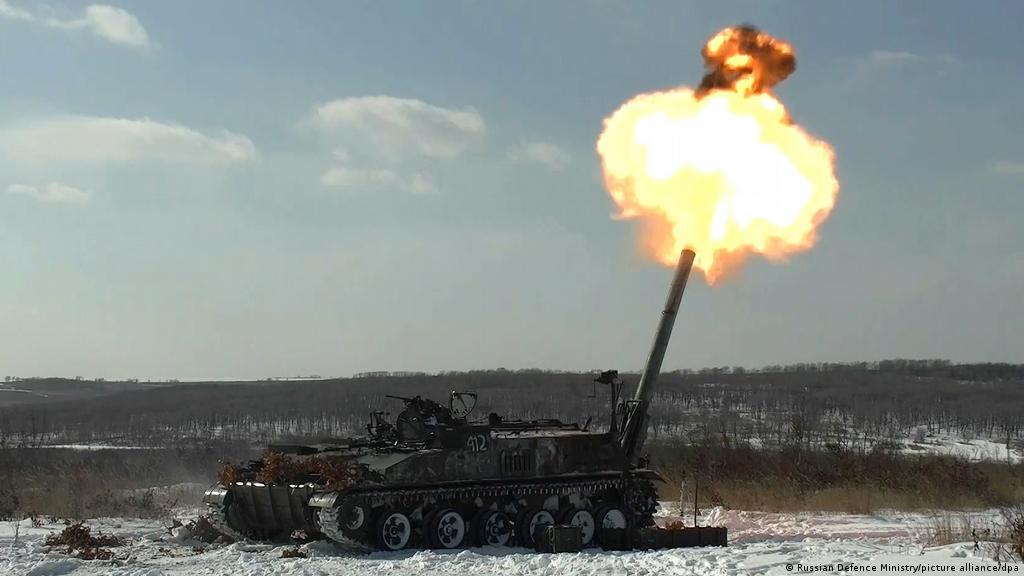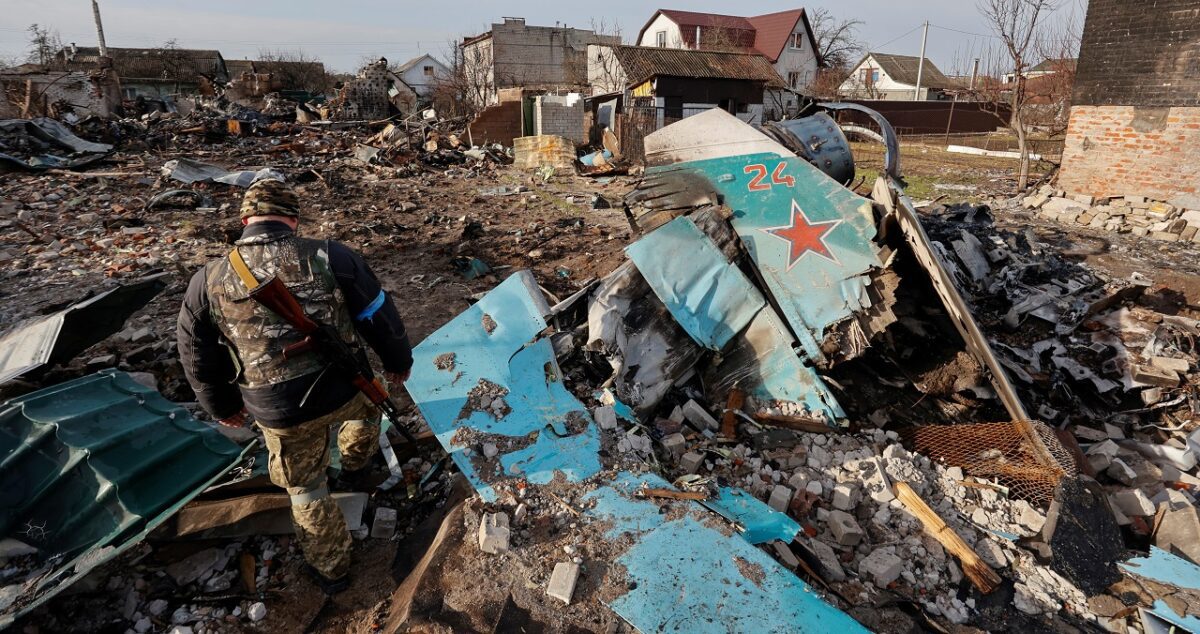Russia has unleashed its gigantic Soviet-era 2S4 Tyulpan 240 mm mortars to fire laser-guided rounds to pound the Azovstal Steel Plant in the southern port city of Mariupol.
“Serial Killer” – Ukraine’s 1st Western Missile Defense System To Challenge Russian Fighter Jets, Attack Helos
The 2S4 Tyulpan is the largest mortar system which has a history of devastating fortifications on several battlefields across the world, including Afghanistan, Syria, Israel, Chechnya, and Ukraine.
An image has appeared online reportedly depicting the Russian Armed Forces firing Smel’chak laser-guided rounds at the Azovstal Steel Plant, just days after Ukrainian fighters inside the complex vowed that they would not surrender.
“Surrender is not an option because Russia is not interested in our lives,” said Ilya Samoilenko, an intelligence officer with the Azov Regiment.
This is not the first time Russia has fielded the 240 mm mortar in Ukraine. In 2015, the 2S4s were spotted in Ukraine by the OSCE observers, monitoring movements of equipment in the war in Donbas with drones.

The Tyulpan established a reputation for itself after Russian forces used the mortar system to bring down the airports of Luhansk and Donetsk. In both cases, their bombardments collapsed airport terminals onto their foundations, forcing the Ukrainian army to retreat from the positions they had held for months.
The Deadly 2S4 Tyulpan 240 mm Mortar
The West saw the 2S4 Tyulpan for the first time in 1975 and received the NATO designation M-1975. The Tyulpans – Russian for ‘Tulip’ – have a relatively limited range and a low rate of fire of only one round per minute, particularly because of the large size of the mortar and rounds they fire: 130 kg (290 lb) for standard High Explosive (HE) rounds and 228 kg (503 lb) for rocket-assisted HE rounds.
‘Mission Aviation’ – China Unveils Competitor To Boeing 737, A320; Tests 1st Pre-Delivery Flight Of C919 Aircraft
Each shot packs so much power that it can be felt in places kilometers away.

The 2S4 offers a range of 9,650 meters using standard high-explosive rounds and a range of 20,000 meters using extended range munition. A blast from the 28-ton Tyulpan smoothbore mortar can take out fortified buildings, bunkers, and airport runways.
Besides that, the Tyulpan can fire concrete-piercing shells designed to shatter bunkers and Sayda incendiary projectiles to set buildings ablaze. There also exists a nuclear 3B11 shell. The 2S4 was deployed at high-level nuclear-artillery brigades during the Cold War.
Unlike a shot fired from a howitzer, mortar rounds descend almost vertically downward on the target, effectively destroying walls of fortifications and cave mouths and piercing through the roofs of buildings.
The weapon system is operated by a crew of nine, with four crew members riding on the self-propelled mortar itself and the other five following behind in a separate armored personnel carrier. The armor is said to be 20 mm thick, enough for protection against small arms and shrapnel.

Sergey Shoigu
Laser-Guided Smel’chak ‘Daredevil’ Munitions
The round being fired at the Azovstal complex, as seen in the image, is a laser-guided Ukrainian Smel’chak, which has a completely different shape compared to the unguided ammunition for the 2S4.
It seems against ukranian forces on "Azovstal" there use this 240mm guided mortar round "Smelchak". Such accuracy is needed if known where the weak points of the shelters at Azovstal are or to destroy the entrancesexists from these shelters. pic.twitter.com/gkQ8abQVEO
— Yuri Lyamin (@imp_navigator) May 13, 2022
The 125 kg Smel’chak – Russian for Daredevil – was developed by the Soviets in the 1980s to be employed in conjunction with a forward artillery observer who would use a portable laser designator to “paint” the target.
In present times, there are other platforms equipped with laser designators, such as drones, that can also perform this function.
The Smel’chak laser-guided rounds fired by the Tyulpan in Afghanistan and Chechnya are known to have consistently destroyed targets quickly, precisely, and with only a few rounds.
The “QUAD SQUAD” – Why US Desperately Needs ASEAN By Its Side To Challenge An Unruly China
For example, a total of 127 targets were reportedly destroyed by Smel’chak during the seizure of Grozny in the second Chechen war in 2000, systematically “leveling” the city from afar, according to one analyst.
Use Of Smel’chak At The Azovstal Steel Complex
The use of Smel’chak at the Azovstal steel plant makes sense, especially because the complex sits on top of a maze-link tunnel network that has been shielding the defenders from bombardments.
The laser-guided munition can be used to hit specific weak points precisely or to seal tunnel entrances and exits. Also, the proximity of Russian forces to the steel complex means the Tyulpan’s limited nine km range with this munition is not an issue.
This is also an interesting development amid reports of ever-dwindling Russian stock of precision munitions of any kind, coupled with the failure of the Russian Air Force to establish uncontested control over Ukraine’s airspace.
This is because, typically, the task of destroying fortified strong points with powerful shells is performed by airstrikes using precision-guided munitions.

Moreover, a ground-based system offers the advantage of sustained fire over time. In the words of journalist Paul Conroy who covered the siege of Homs in Syria, where Tyulpan played a prominent role, “I lay there and listened as salvos of three of these mortars were launched at a time, 18 hours a day, for five days.”
The Azovstal steel plant is the last holdout of Ukrainian resistance against the Russian army in the devastated port city of Mariupol and its fate has taken on a symbolic value in the broader battle since Russia invaded Ukraine on February 24.
With most of the Russian ground forces having been redirected North to take part in more urgent offensives, a small number of battalion tactical groups continue to pound the steel complex relentlessly with virtual impunity.
- Written by Tanmay Kadam/EurAsian Times Desk
- Contact the author at etdesk@eurasiantimes.com
- Follow EurAsian Times on Google News




